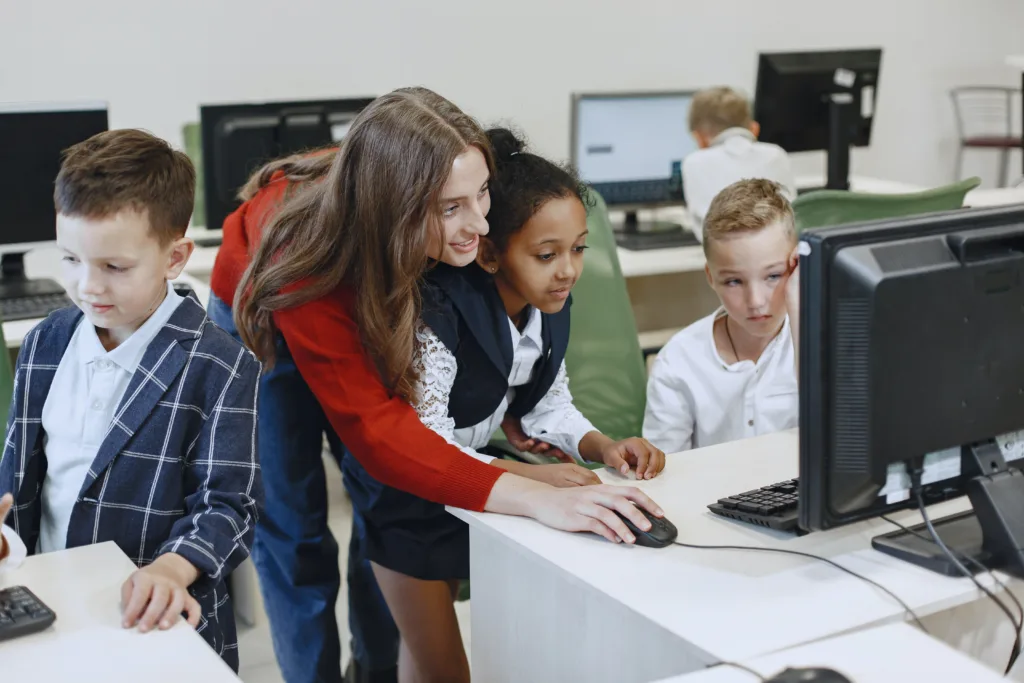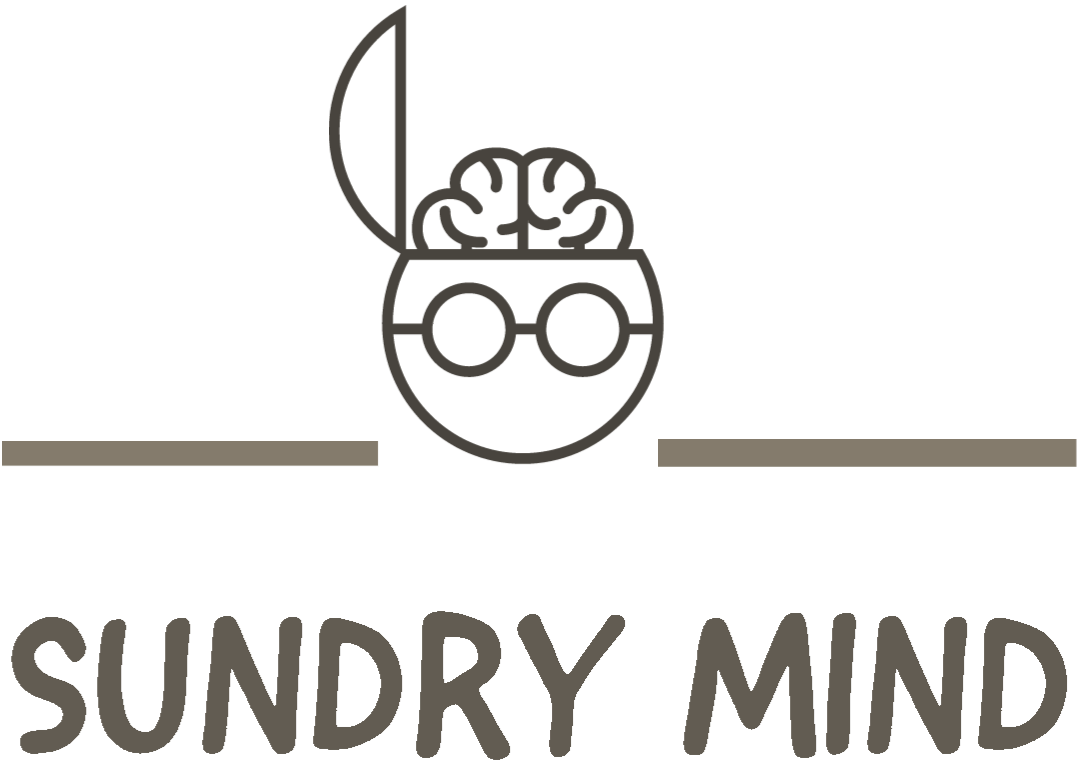Discover the Power of Assistive and Adaptive Technologies in Inclusive Education. Learn how these innovative technologies are revolutionizing education, promoting accessibility, and empowering students of all abilities. Unlock the potential of assistive and adaptive technologies to enhance student engagement, and academic achievement, in the realm of inclusive education.
Table of Contents
Introduction
The introduction of inclusive education has brought much-needed equality in educating individuals with disabilities. This progressive approach integrates students with special needs into mainstream classrooms, promoting an environment where they can showcase their unique abilities and demonstrate their capability to learn and perform on par with their non-disabled peers. Inclusive education ensures no learner is left behind by facilitating access to standard educational settings and support services. This holistic approach acknowledges diverse needs. It aims to create a “least restrictive environment” that offers a meaningful educational experience for students with disabilities and diligently addresses and overcomes barriers that impede effective and sustained participation in education; thus, it goes beyond just integrating students with special needs into mainstream classrooms as it encourages all students, with or without disabilities, to learn together by actively providing access to standard educational settings and support services.
One significant factor that can support the goal of inclusive education is the role of technology in the classroom. Technology has already demonstrated its immense value in the education sector, and its significance becomes even more evident in the context of inclusive education.
Assistive and adaptive technologies have emerged as powerful tools facilitating an inclusive classroom approach. Accessing quality education is essential for every student regardless of ability- and assistive technology provides an avenue towards achieving this goal as it enables those living with a disability perform tasks considered daunting without depending on anyone else’s help entirely.

Assistive vs Adaptive Technology
Assistive technology refers to devices, tools, or technologies that assist individuals with disabilities in performing tasks, enhancing their independence, and improving their quality of life. This technology aims to enable people with disabilities to participate fully in activities, overcome barriers, and improve their overall well-being. It encompasses many products and services, from simple aids like hearing aids or wheelchairs to more complex technologies such as speech recognition software or robotic prosthetics.
Adaptive technology, on the other hand, refers to modifying or adjusting existing technologies (like keyboards), curriculum, learning environments, and others, specifically tailored to accommodate the unique needs of students with disabilities. Examples of adaptive technology include modified keyboards, adjustable seating, and alternative textbook formats. This article tried to explore the assistive and adaptive technologies that emerged as a powerful toolkit supporting an inclusive classroom approach.
| Aspect | Adaptive Technology | Assistive Technology |
|---|---|---|
| Definition | Technology designed to adapt the learning environment | Technology designed to assist individuals with disabilities |
| Purpose | Modifies or adjusts the learning environment | Aids individuals in overcoming barriers to learning |
| Focus | Broadly benefits a wide range of students | Specifically targets individuals with disabilities |
| Function | Provides universal support and accommodations | Offers specific tools or devices for individual needs |
| Scope | Can be used by all students | Intended for use by students with disabilities |
| Examples | Adjustable desks, flexible seating, multimedia tools | Text-to-speech software, communication devices, screen readers |
| Implementation | Integrated into the overall classroom environment | Tailored to meet individual needs and abilities |
| Goal | Enhances accessibility and inclusivity for all students | Addresses specific challenges and disabilities |
It’s important to note that the line between adaptive and assistive technologies can sometimes blur, as some technologies can serve both adaptive and assistive purposes depending on the context and individual needs
Role of The Assistive And Adaptive Technologies In Inclusive Education
The role of assistive and adaptive technologies is incredibly significant in inclusive education. These technologies play a critical role in supporting the diverse learning needs of students, particularly individuals with disabilities. They provide valuable tools and devices that assist these students in performing tasks that may be challenging for them otherwise.
1. Accessible Learning:
Assistive and adaptive technologies ensure that students with disabilities can access educational materials, resources, and activities equally. These technologies eliminate barriers and empower students to participate in the learning process fully.
2. Personalized Support:
Assistive and adaptive technologies allow customized learning experiences tailored to individual strengths, weaknesses, and preferences. They provide targeted support, accommodations, and modifications, ensuring that students can learn in ways that are appropriate for unique individual needs.
3. Inclusion and Participation:
By incorporating assistive and adaptive technologies, inclusive education promotes the active participation and inclusion of all students, regardless of their abilities. These technologies create a supportive environment where every learner can contribute and flourish.
4. Enhanced Learning Outcomes:
Integrating assistive and adaptive technologies has improved learning outcomes for students with disabilities. These technologies provide additional support, facilitate comprehension, and promote engagement, improving academic performance.
5. Collaboration and Communication:
Assistive and adaptive technologies facilitate collaboration and communication between students, teachers, and parents. These technologies enable effective information sharing, feedback, and progress tracking, ensuring a collaborative approach to inclusive education.
6. Independence and Empowerment:
Assistive technologies are pivotal in empowering students with disabilities to become independent learners. By helping them overcome challenges, develop self-advocacy skills, and take charge of their educational journey, these technologies foster a sense of empowerment among students.
Enhancing Inclusive Education through Assistive and Adaptive Technologies
Assistive and adaptive technologies have become indispensable tools in promoting inclusive education, providing students with disabilities equal access to educational opportunities. These technologies offer a range of supports and accommodations to address individual needs, enabling students to participate in the learning process fully. Removing barriers enables all students, including those with disabilities, to participate and succeed.
Inclusive education aims to ensure that every student has equal opportunities, irrespective of their abilities. Artificial Intelligence (AI) is playing a significant role in advancing inclusive education through adaptive and assistive technologies. Adaptive technology refers to tools and systems that adjust to the unique learning needs of individual students. AI-powered adaptive technology uses algorithms and machine learning to personalize learning experiences, tailoring content, pacing, and assessments to match students’ abilities and preferences. Assistive technology, on the other hand, helps assist students with disabilities by offering tools and supports that power them to overcome barriers and actively participate in the learning process. AI in assistive technology enhances accessibility, such as speech-to-text software for students with speech impairments or predictive text technology for those with writing difficulties. With AI-driven adaptive and assistive technologies, educators can create inclusive classrooms that cater to diverse learners and promote equal educational opportunities for all.
Let’s take a closer look at some of the essential applications of assistive and adaptive technologies in inclusive classrooms, accompanied by real-world examples:
1. Screen Readers:
Screen readers are software applications that convert text on a screen into synthesized speech or braille output. Research shows that screen readers enhance access to digital content, textbooks, and online resources, facilitating independent learning. They are particularly beneficial for students with visual impairments.
Example: NVDA (NonVisual Desktop Access) is a free and open-source screen reader used by students with visual impairments to access digital materials and navigate online platforms.
2. Optical Character Recognition (OCR):
OCR technology enables printed text to be scanned and converted into digital formats, which can be read aloud by a screen reader or displayed visually. This technology benefits students with visual impairments or reading difficulties by providing access to printed materials.
Example: Students with dyslexia can use OCR apps like Prizmo or ClaroPDF to convert printed texts into digital formats and listen to the content through a screen reader.
3. Talk-to-Text Devices:
Talk-to-text or speech-to-text devices are invaluable tools that harness the power of speech recognition software like Dragon NaturallySpeaking or voice typing features on smartphones and computers. By enabling individuals to articulate their ideas or sentences, these devices transcribe spoken words into written text, effectively overcoming writing and spelling challenges.
Example: Talk-to-text devices prove immensely beneficial in inclusive classrooms, empowering students with dyslexia or dysgraphia to focus on conveying their ideas without being burdened by writing mechanics. These devices facilitate note-taking and writing assignments, facilitating a seamless and inclusive learning experience for students with diverse abilities.
4. Alternative Input Devices:
For students with physical disabilities affecting their motor skills, alternative input devices allow them to control computers or devices using methods other than a standard keyboard and mouse. These devices can include joysticks, touchpads, switches, or eye-tracking systems.
Example: Eye-gaze technology, such as Tobii Dynavox or PCEye, enables students with limited mobility to control a computer cursor using their eye movements, empowering them to interact with educational software or communication tools.
5. Captioning and Transcription:
Captioning and transcription services enhance access to audio and video content for students with hearing impairments. Captions provide text-based representations of spoken words, enabling students to follow along with the audio content.
Example: YouTube’s automatic captioning feature, coupled with manual editing, allows educators to create accurate captions for instructional videos, making them accessible to students with hearing disabilities.
6. Augmentative and Alternative Communication (AAC) Apps:
AAC apps facilitate communication for students with speech and language disabilities. These apps provide a platform for students to express themselves using symbols, pictures, or text.
Example: Proloquo2Go is a popular AAC app that enables students with communication difficulties to generate spoken messages by selecting characters or typing text, promoting active participation in classroom discussions.
7. Assistive Writing Tools:
Assistive writing tools support students with writing difficulties, including dysgraphia or motor skill impairments. These tools offer features such as word prediction, spell-checking, and speech-to-text functionality.
Example: WordQ is a writing software that assists students by providing word suggestions and sentence completion options, reducing spelling and grammar errors, and improving overall writing efficiency.
8. Virtual and Augmented Reality (VR/AR):
Virtual and augmented reality technologies provide immersive learning experiences, allowing learners to explore virtual environments and interact with virtual objects. These technologies can enhance understanding and engagement for students with various learning styles and disabilities.
Example: Using VR headsets and applications like Google Expeditions, students can explore historical sites, dive into scientific simulations, or engage in virtual field trips, creating an interactive learning experience.
9. Math Accessibility Tools:
Math accessibility tools help students with visual impairments or learning disabilities access and comprehend mathematical content. These tools provide alternative representations of math equations, such as sonification, tactile graphics, or screen reader compatibility.
Example: Calculators, primarily scientific calculators, can benefit individuals with dyscalculia or difficulties in mathematical calculations. They provide support in performing complex computations or verifying answers quickly. MathPlayer is a software plugin that enables screen readers to interpret and vocalize mathematical equations written in MathML, making math content accessible for students with visual impairments.
10. Adaptive Learning Platforms:
Adaptive learning platforms use intelligent algorithms to personalize instruction based on student’s needs and learning styles. These platforms provide adaptive content, feedback, and assessments, allowing students to progress independently.
Examples such as Khan Academy, DreamBox Learning, Duolingo, and SMART Sparrow are adaptive learning platforms that incorporate adaptive learning features. These features dynamically adjust the difficulty level of questions and provide personalized recommendations to meet the unique learning needs of students.
11. Assistive Listening Devices:
Assistive listening devices, like FM systems or induction loops, enhance auditory accessibility for students with hearing impairments in classrooms. These devices decrease background noise and amplify the teacher’s voice, ensuring effective communication.
For instance, Personal FM systems, such as the Phonak Roger system, directly transmit the teacher’s voice to the student’s hearing aid, improving their capacity to hear and understand instructions.
Essentially, there are enough multiple options to fulfill the requirements of an inclusive classroom using assistive and adaptive technologies. However, the true challenge lies in effectively implementing these technologies in real-life educational settings.

Challenges associated with implementing Assistive and Adaptive Technologies in Education
While assistive and adaptive technologies offer great potential to enhance inclusive education, some challenges and issues arise during implementation. Here are some common problems faced in implementing these technologies in education:
1. Access and Affordability:
One major challenge is ensuring equitable access to assistive and adaptive technologies for all students who need them. These technologies are often expensive, making it difficult for schools to provide them to all students in need. This issue is particularly prevalent in developing countries. Disparities in access can stem from geographical location, socioeconomic conditions, and inadequate infrastructure.
2. Lack Of Training and Professional Development:
The level of expertise and training among teachers and educators regarding using and applying assistive technology is vital. Limited training and professional development opportunities pose a significant obstacle to adopting assistive and adaptive technologies in inclusive education. Teachers and educators often lack the necessary techno-pedagogical skills and awareness to use these technologies to support students with disabilities effectively. Continuous professional development is crucial to keep educators well-informed about the latest advancements in assistive technology and enhance their inclusive education practices. Comprehensive training programs and ongoing professional development initiatives are essential to empower educators in effectively leveraging these technologies for an inclusive educational environment. The availability of training persons at local schools is also crucial in this aspect.
3. Compatibility and Technical Issues:
Ensuring compatibility between assistive and adaptive technologies and existing educational systems or platforms can be challenging. Technical issues, software glitches, or compatibility problems can hinder the seamless integration of these technologies, leading to frustration and disruption in the learning process.
4. Individualization and Customization Issues:
Each student may have unique needs and preferences regarding assistive and adaptive technologies. Customizing and tailoring these technologies to meet individual requirements can be time-consuming and resource-intensive. Providing personalized solutions for each student may present logistical challenges for teachers, educators, and support staff.
5. Awareness and Stigma:
Awareness and stigma surrounding assistive and adaptive technologies can hinder their acceptance and utilization. Limited understanding and misconceptions may lead to resistance or hesitance from students, parents, and even teachers. Overcoming attitudinal barriers is crucial for teachers to embrace and effectively use assistive technology fully. Promoting awareness and fostering positive attitudes towards these technologies is essential, emphasizing their potential to enhance learning and inclusivity.
6. Lack Of Knowledge About Evolving Technologies:
Assistive and adaptive technologies continuously develop, regularly introducing new advancements and updates. Keeping up with the latest technologies and ensuring access to up-to-date devices and software can be challenging for educational institutions. There may also be compatibility issues between older devices and newer technologies, requiring additional investment in updating equipment.
7. Insufficient funding:
Inadequate funding is a formidable hurdle when integrating assistive and adaptive technologies within inclusive classrooms. The scarcity of financial resources puts a strain on the availability and accessibility of these technologies, thereby impeding their seamless integration and optimal effectiveness. It is imperative to secure adequate funding to ensure all students can access these technologies, granting them equal opportunities to reap the benefits and receive the necessary support for a truly inclusive education. By addressing funding challenges, educational institutions can foster an inclusive environment that empowers every student to thrive.
8. Issues Related To Data Privacy and Security:
Using technology in education raises concerns about privacy and security, especially when using assistive and adaptive technologies. These technologies often involve collecting and storing personal and sensitive information about students, such as their learning disabilities, medical conditions, or individualized education plans. Educational institutions must protect students’ personal information and data when using assistive and adaptive technologies. Implementing robust data privacy and security measures is crucial to maintain trust and confidentiality.
Conclusion
Assistive and adaptive technologies are vital in advancing inclusive education by removing barriers and empowering students with diverse abilities. However, true inclusivity requires equitably addressing all students’ diverse learning needs. This entails a flexible education system that adapts teaching strategies and instructional methods to cater to individual learning needs. It involves changes in attitudes, infrastructure, pedagogy, personalized approaches to teaching, assessment, evaluation, adaptive curriculum and acceptance at all levels of the education system. Collaboration among educators, administrators, policymakers, and technology providers is essential for successfully integrating these technologies. Accessibility, training, compatibility, awareness, and data privacy must be key considerations. These technologies’ practical implementation and utilization in real-life classroom scenarios are crucial for their effectiveness. Teachers play a critical role in effectively implementing these technologies within inclusive classrooms. By embracing change and adopting student-centred strategies, teachers can create inclusive classrooms that promote excellence for all students. Overcoming attitudinal barriers to the acceptance and utilization of assistive technology is essential. Through collective efforts to address these challenges, educational institutions can establish an inclusive environment where every learner can thrive.
Frequently Asked Questions
What is inclusive education?
Inclusive education ensures equal opportunities for all students, regardless of abilities. It integrates diverse learners into regular classrooms, fostering an inclusive environment that values diversity, removes barriers, and supports academic, social, and emotional growth.
What are assistive and adaptive technologies?
Assistive technology enhances the capabilities of individuals with disabilities, enabling them to perform tasks, gain independence, and improve their quality of life. Adaptive technology modifies existing tools and environments to provide for the unique requirements of students with disabilities.
How do assistive and adaptive technologies benefit inclusive classrooms?
Assistive and adaptive technologies benefit inclusive classrooms by ensuring equal access to education for students with diverse abilities. They enable full participation in classroom activities, facilitate learning, and address challenges related to communication, reading, writing, and accessibility.
What are some examples of assistive and adaptive technologies used in inclusive classrooms?
Various technological tools are available to assist people with disabilities in accessing and processing information. These include screen readers, OCR software, talk-to-text devices, alternative input devices, captioning and transcription services, AAC apps, assistive writing tools, VR/AR technologies, math accessibility tools, adaptive learning platforms, and assistive listening devices. These tools greatly enhance the lives of individuals with disabilities.
How can assistive and adaptive technologies support students with visual impairments?
Assistive and adaptive technologies offer valuable support to students with visual impairments. Tactile graphics, braille displays, and screen magnification tools enhance their learning experience by providing tactile and enlarged representations of visual content. Screen readers and OCR software convert digital content and printed materials into accessible formats, enabling them to access information.
How do talk-to-text or speech–to–text devices assist students with writing difficulties?
For those dealing with challenges like dysgraphia or dyslexia, talk-to-text or speech-to-text devices may prove helpful by allowing them to vocalize ideas instead of depending solely on writing methods. By transcribing speech into text, these devices aim to introduce more independence and inclusiveness into classroom settings.
Can assistive and adaptive technologies benefit students with communication difficulties?
Yes, AAC apps and devices enable students with speech and language disabilities to communicate effectively. These aids offer individuals options such as symbols, pictures, or text as means of expression towards effective communication during class participation. The utilization of AAC technology solves problems around barriers within educational settings related to smooth conversations by facilitating student involvement through diverse channels.
How can assistive and adaptive technologies be implemented in real-life classroom settings?
Collaboration among educators, administrators, policymakers, and technology suppliers is required for successful implementation. It entails educating and raising awareness, guaranteeing accessibility and interoperability, managing financial issues, and prioritizing data privacy.
How do assistive and adaptive technologies impact inclusive classrooms?
Disabled students deserve every opportunity to flourish academically without any limitations stemming from disability-related challenges. Assistive technologies are essential in creating an inclusive space where everyone has equal growth opportunities grounded in experience-based knowledge. By removing obstacles and fostering independence for all learners, these innovative tools support the holistic development of diverse individuals within higher education settings.
What are the 5 Ps of assistive technology?
The five interconnected areas of assistive technology, also known as the 5 Ps, are Policy, Products, Personnel, and Provision. These areas focus on creating a people-centred approach to assistive technology implementation.
What are the most common assistive technology?
Text-to-speech software, Braille, magnifiers, screen reading software, and large print materials are among the most commonly utilized types of assistive technology.





1 thought on “Assistive and Adaptive Technologies: Breaking Barriers and EMPOWERING Inclusive Education”